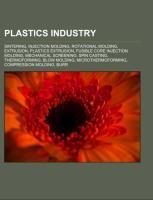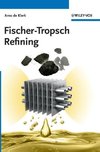
-
 Anglický jazyk
Anglický jazyk
Plastics industry
Autor: Source: Wikipedia
Source: Wikipedia. Pages: 64. Chapters: Sintering, Injection molding, Rotational molding, Extrusion, Plastics extrusion, Fusible core injection molding, Mechanical screening, Spin casting, Thermoforming, Blow molding, Microthermoforming, Compression molding,... Viac o knihe
Na objednávku, dodanie 2-4 týždne
18.18 €
bežná cena: 20.20 €
O knihe
Source: Wikipedia. Pages: 64. Chapters: Sintering, Injection molding, Rotational molding, Extrusion, Plastics extrusion, Fusible core injection molding, Mechanical screening, Spin casting, Thermoforming, Blow molding, Microthermoforming, Compression molding, Burr, Electron beam processing, Resin casting, Drawing, Formosa Plastics Group Museum, Transfer molding, Plastic particle water pollution, Injection molding of liquid silicone rubber, Rotary wheel blow molding systems, Undercut, Surface integrity, In-mould labelling, Corona treatment, Heat sealer, Cryogenic deflashing, Sprue, Injection molding machine, Plastics engineering, Spinning, Plastisol, Cryogenic grinding, Hand mould, Flexible mold, Release agent, Hot runner, Brake, Sheet moulding compound, Pultrusion, Record press, Extrusion coating, Draft, Extrusion moulding, Banbury mixer, Coinjection, Near net shape, Frost line, Parting line, Chemical vapor infiltration, Flame polishing, Melt, Helical extrusion, Spinneret, Draw twister, Matrix mold, Plastic compounding, Flow mark, Plastometer. Excerpt: Injection molding (British English: moulding) is a manufacturing process for producing parts from both thermoplastic and thermosetting plastic materials. Material is fed into a heated barrel, mixed, and forced into a mold cavity where it cools and hardens to the configuration of the mold cavity. After a product is designed, usually by an industrial designer or an engineer, molds are made by a moldmaker (or toolmaker) from metal, usually either steel or aluminum, and precision-machined to form the features of the desired part. Injection molding is widely used for manufacturing a variety of parts, from the smallest component to entire body panels of cars. The first man-made plastic was invented in Britain in 1861 by Alexander Parkes. He publicly demonstrated it at the 1862 International Exhibition in London, calling the material he produced "Parkesine." Derived from cellulose, Parkesine could be heated, molded, and retain its shape when cooled. It was, however, expensive to produce, prone to cracking, and highly flammable. In 1868, American inventor John Wesley Hyatt developed a plastic material he named Celluloid, improving on Parkes' invention so that it could be processed into finished form. Together with his brother Isaiah, Hyatt patented the first injection molding machine in 1872. This machine was relatively simple compared to machines in use today. It worked like a large hypodermic needle, using a plunger to inject plastic through a heated cylinder into a mold. The industry progressed slowly over the years, producing products such as collar stays, buttons, and hair combs. The industry expanded rapidly in the 1940s because World War II created a huge demand for inexpensive, mass-produced products. In 1946, American inventor James Watson Hendry built the first screw injection machine, which allowed much more precise control over the speed of injection and the quality of articles produced. This machine also allowed material to be mixed before injection, so that co
- Vydavateľstvo: Books LLC, Reference Series
- Rok vydania: 2012
- Formát: Paperback
- Rozmer: 246 x 189 mm
- Jazyk: Anglický jazyk
- ISBN: 9781156791363



 Nemecký jazyk
Nemecký jazyk 








